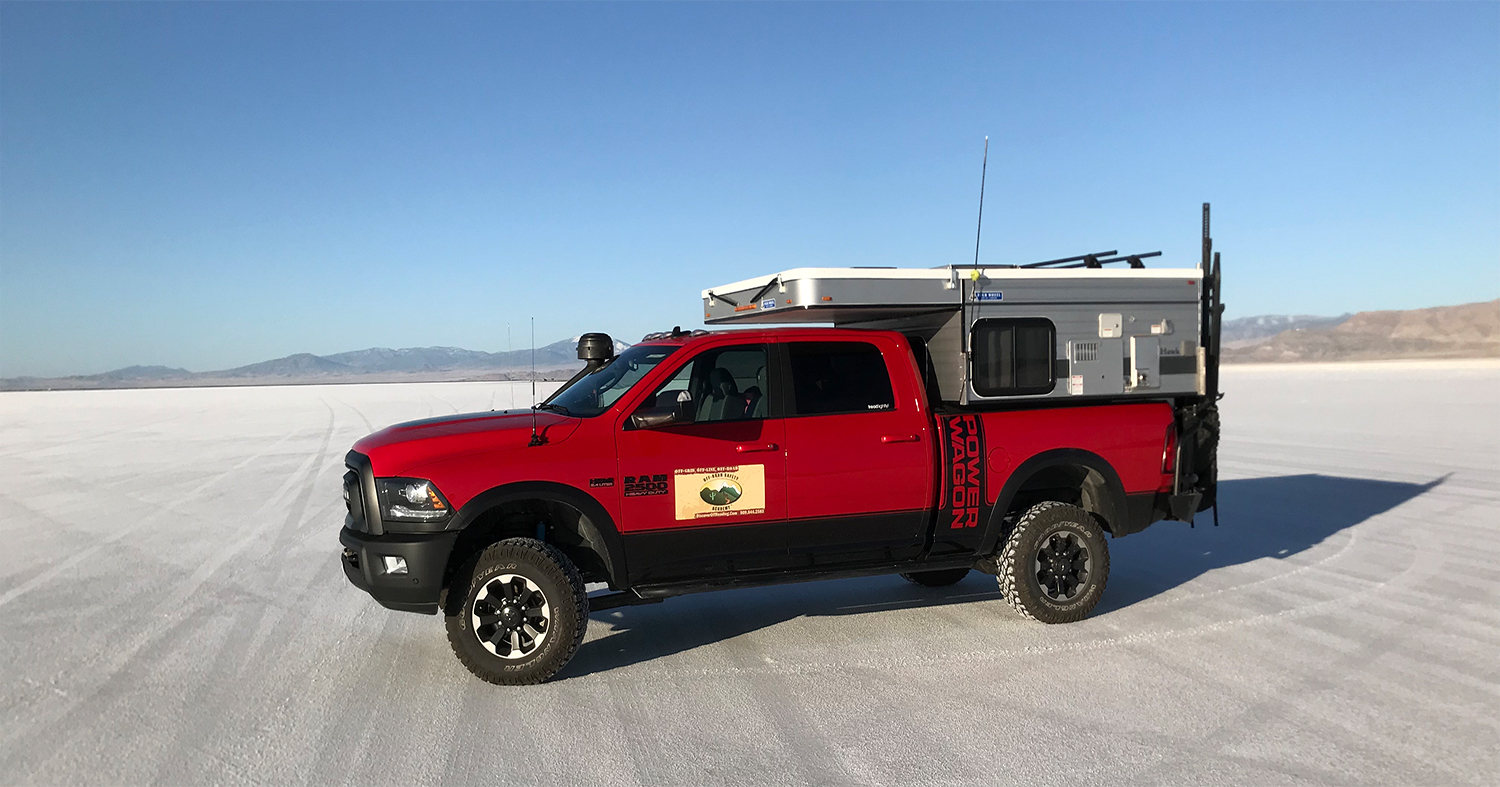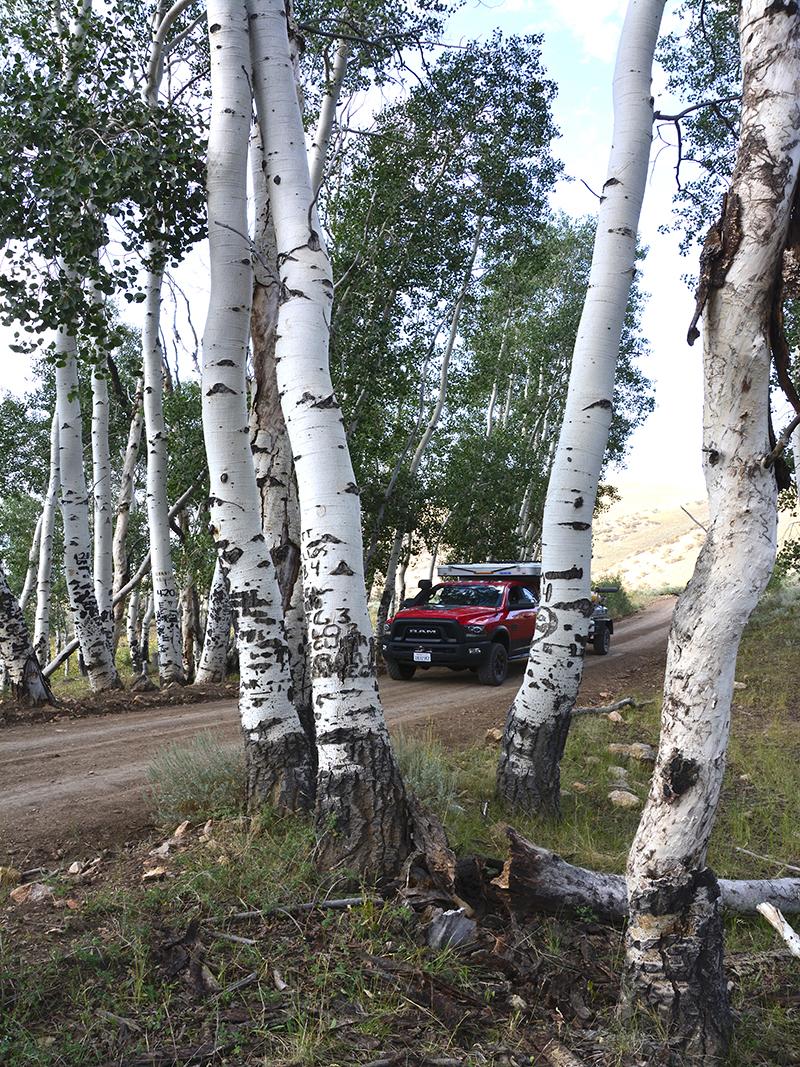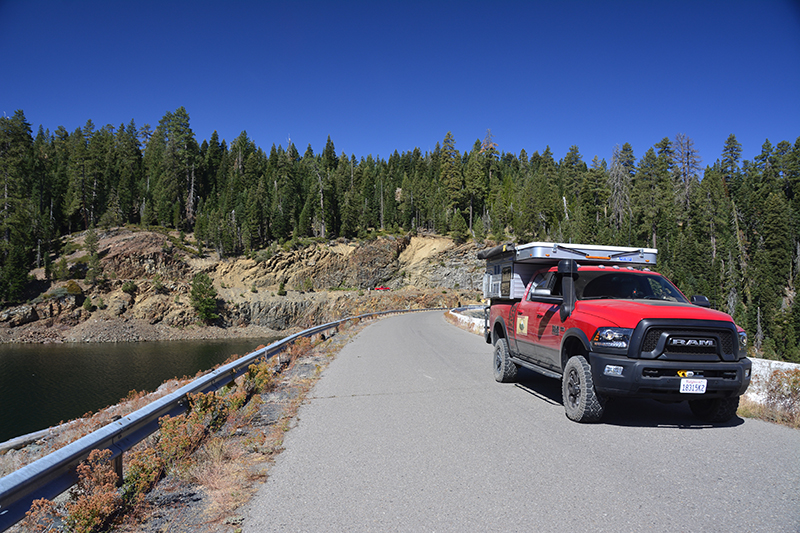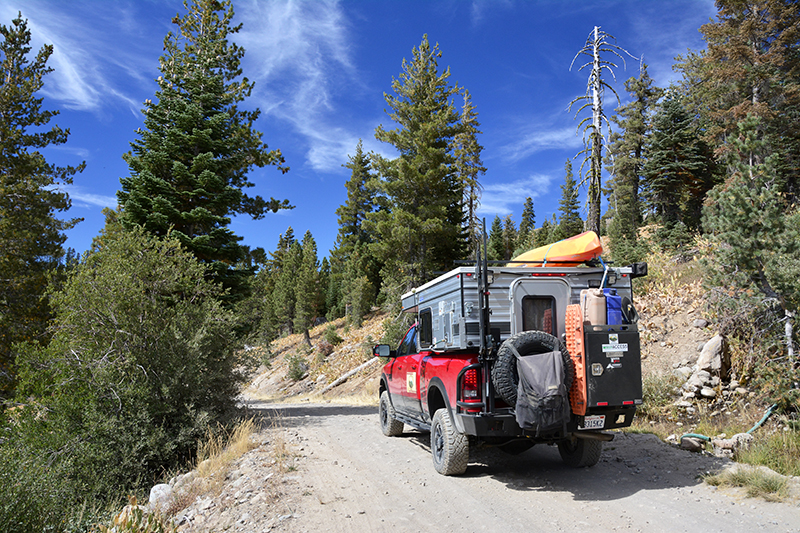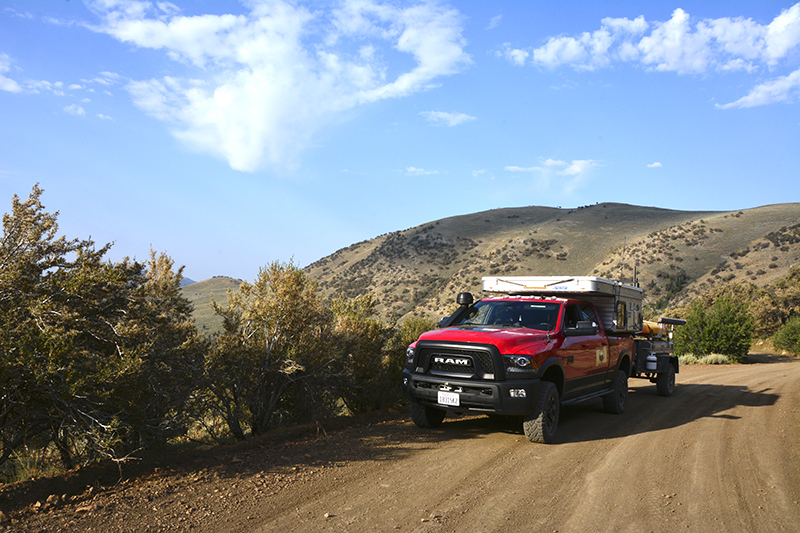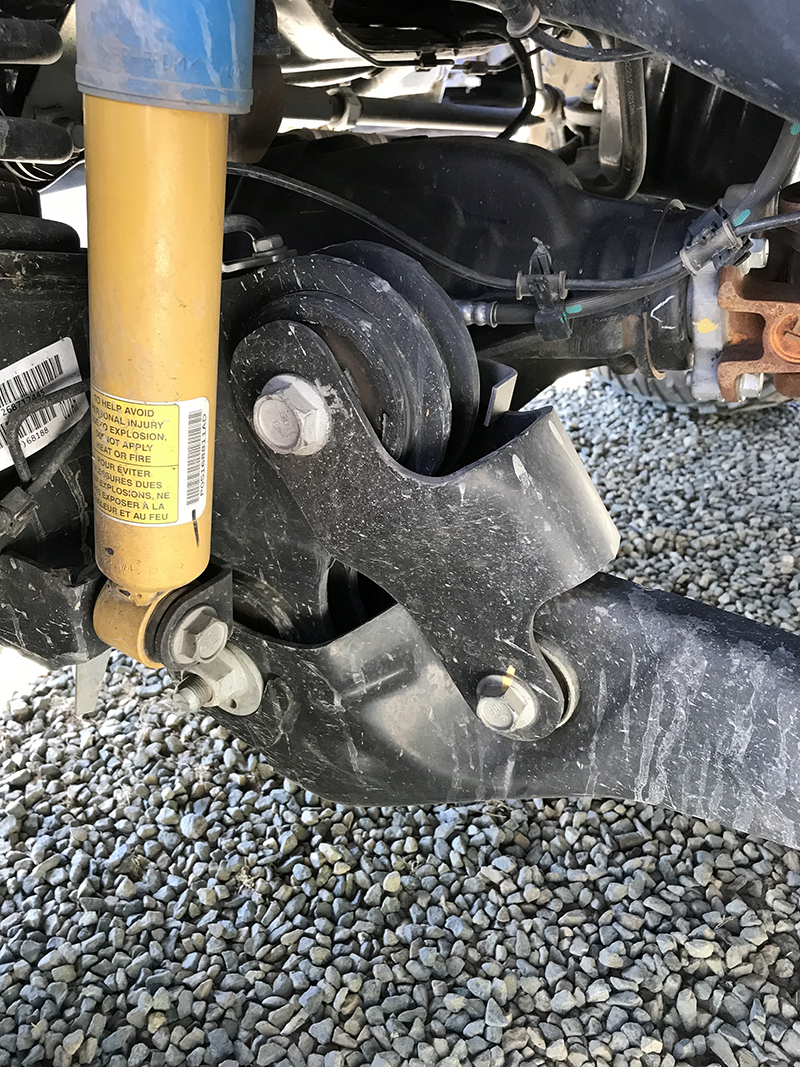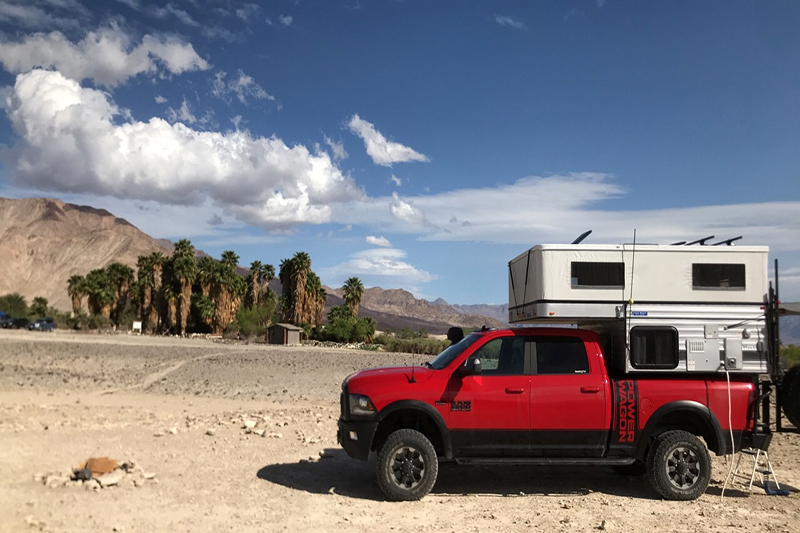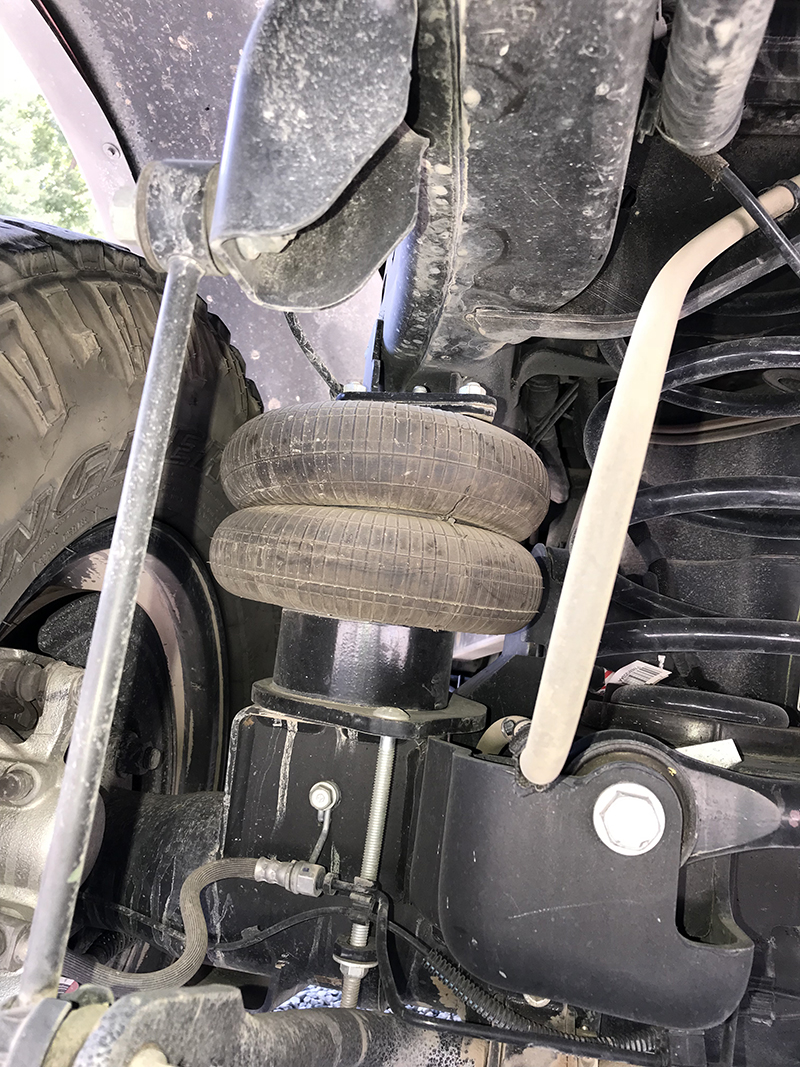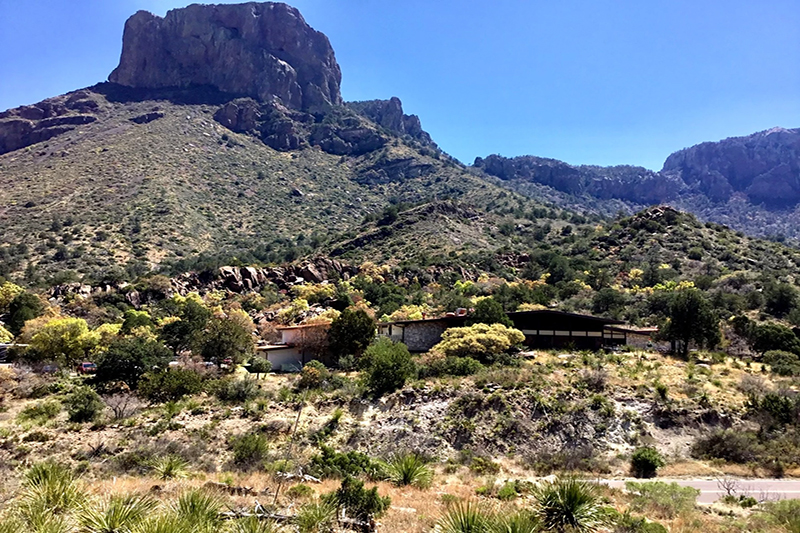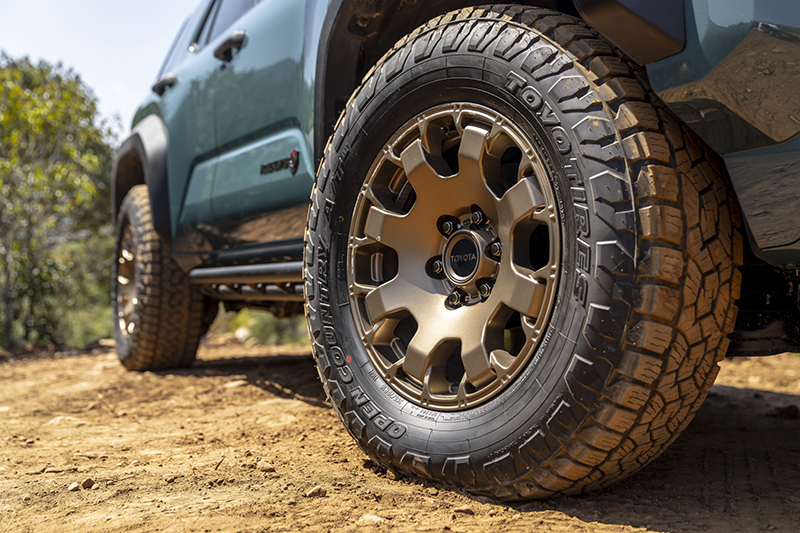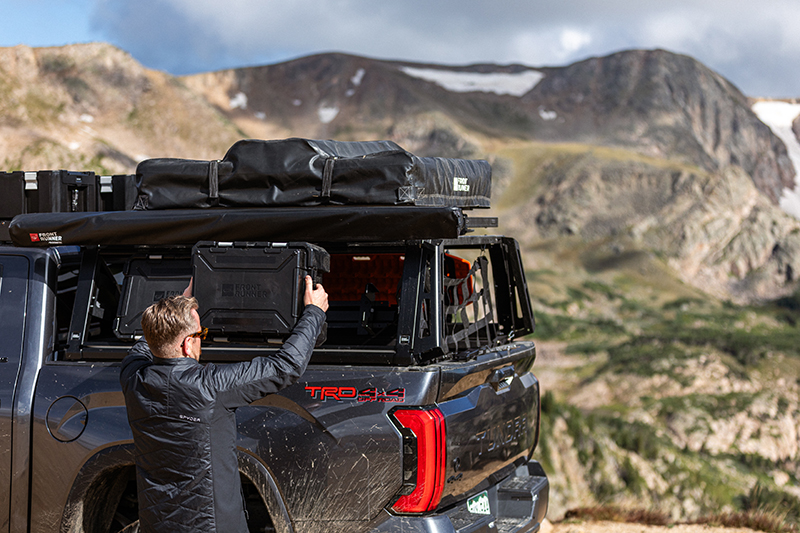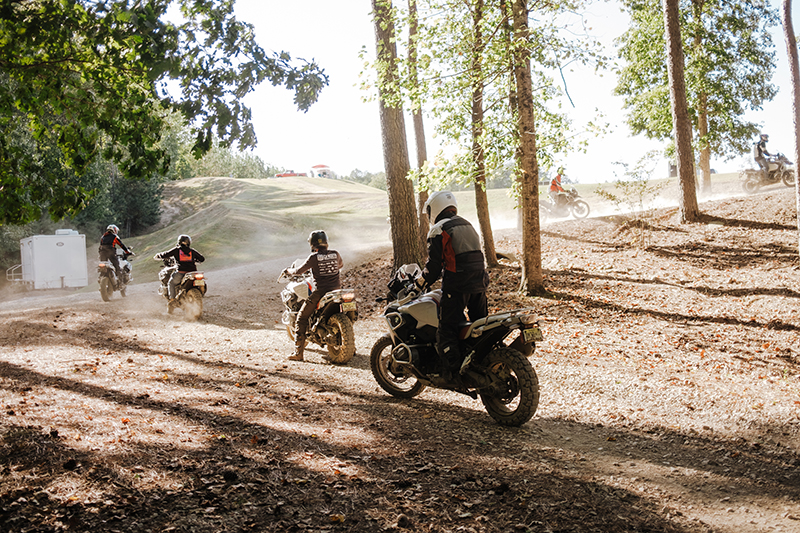Overland RAM Power Wagon
The day after picking up my new 2018 RAM Power Wagon in Southern California, I was driving off road through Saline Valley in Death Valley National Park. This was definitely not by design, as I had none of my typical off-road recovery equipment, camping comforts, cameras, supplies, or emergency communication gear. Throwing caution to the wind, this was how confident I felt about the “off-the-showroom-floor” trail-worthiness of my new RAM Power Wagon.
My original plan was to simply drive straight home to North Central California via I-5. But, as I was enjoying the wonderful new-truck smell, a huge groundswell of spontaneity overtook me. With the overcrowded Los Angeles basin in my rear-view mirror, I thought to myself, “Let’s go put this wagon through the wringer.” With a quick call to my wife to let her know of my plans (so I could be found if I should crash and burn), I quickly veered off the interstate and headed toward one of the most remote portions of the Golden State.
Death Valley National Park
Traveling north, I entered Death Valley Park through South Pass on Hunter Mountain. Here at altitude, I encountered a good bit of snow, as it was late November. I aired down the stock Goodyear Duratrac LT285/70R17 tires with a small stick I found on the ground, noting tire pressure through the onboard TPMS. These tires are rated for mud and snow, so they were right at home on this portion of the trail. As I began my descent on the slippery and rather icy trail in Grapevine Canyon, I decided to try the Power Wagon’s Downhill Assist feature. This amazing traction-aiding feature, as in my Rubicon JK, guided the truck straight down the canyon without any brake or accelerator input from me. With the vehicle in 4WD-Low, I was able to manually select between 1st and 2rd gearing from the six-speed automatic transmission, enabling Downhill Assist to proceed at the speed I desired. Brilliant.
Once on the valley floor I began to give the Power Wagon’s proprietary suspension a good workout. This portion of Saline Valley Road is notorious for its punishing washboard, sudden whoop-di-do (quick up and down) nuisances, and deep cross-trail washouts due to desert flash flooding. The truck handled all of these off-road trials better than any vehicle I’d ever driven on this route. The cab was quiet and, for a long wheelbase truck with absolutely no weight in the bed, the ride was exceptionally smooth.
At the north end of the valley floor, I began my gradual ascent up and into Steel Pass. Here the trail becomes much more challenging, with sizable flash-flood washouts and long stretches of large, loose rock. In this section I was able to put the truck’s best-in-class geometric angles to the test (approach angle = 34°, breakover angle = 23.2°, departure angle = 24°), along with trying out its electronic traction control, and rear-axle limited slip differential to restrain wheel spin. At the deepest washout, filled with powdery dirt and smaller cobble, I engaged both my rear and front lockers for the first time to analyze their ability to completely eliminate potential open-differential wheel spin. As there wasn’t much flat real estate at the bottom of the gully, it was important to engage both axle lockers. I was concerned about the loose terrain on the trail and scraping my front or rear bumpers on the ups and downs in the steep wash, potentially lifting the wheels of one axle completely off the ground. The lockers engaged immediately in 4WD-Low, propelling me easily up the other side of the steep ravine.
Beyond Steel Pass I entered the very narrow and boulder-strewn Dedeckera Canyon. Here I used all 14.3 inches of the Power Wagon’s ground clearance, as larger rocks began to litter the trail. Also, I encountered the famous multiple downhill rocky steps prior to spilling out through the canyon’s exit at Eureka Dunes. Because the trail in the canyon is very narrow and uneven, it’s easy to lean a vehicle into the rocky sides of the slot canyon. Many a driver has scraped door panels, fenders, truck beds, campers, and, of course, vulnerable side mirrors in this area. Two decades or so ago, I lost a passenger-side mirror in this canyon. In the RAM I was able to protect my side mirrors by simply pushing one of my now-favorite buttons from the driver’s seat—the power-folding mirror switch.
Once on the rocky steps in Dedeckera Canyon, there were moments of severe front and rear axle articulation. The cab barely tilted, even when putting a single wheel up on a large rock. For the most part the entire truck body remained level during extreme axle articulation—no banging the vehicle into the canyon walls. Why? The answer comes in two parts. First, the Power Wagon’s proprietary suspension system is different from all other RAM 2500 trucks. Its suspension was specifically designed (FCA’s RAM engineers threw millions of dollars at it) for this type of terrain by including Bilstein shocks, modified control arms, softer spring rates, more than two inches of lift, and Power Wagon’s exclusive Articulink design. Articulink incorporates high movement joints at the control-arm-to-axle mount, allowing for additional flexibility and extended axle articulation. Second, additional front-axle flex is possible with the driver-actuated “Smart Bar” disengagement. This front sway-bar disconnect is possible in both 4WD-High and Low transfer case gearing when traveling under 18 mph.
With the sway bar disconnected, I descended diagonally down the steepest of the rocky steps, one wheel on an axle at a time. I’m pretty sure I was getting all 26 inches of the advertised wheel travel on this final rocky step. For the most part the body of the truck was level and a wheel never left the ground. Ahhh… traction with limited body roll. This is what makes the Power Wagon special when traversing challenging off-road terrain.
During this one-day adventure, the Power Wagon completely confirmed that I had done my homework; this was the truck capable of conquering the off-road challenges I throw at it. What I did next to my Power Wagon would leave the RAM’s suspension engineers in tears.
How I Screwed Up My Power Wagon
Before purchasing my Power Wagon, I knew it had a paltry 1,440 pounds of payload capacity. Compare this to the RAM 2500 Laramie with over 3,000 pounds of payload capacity—more than double the Power Wagon’s payload. Why the difference? The Power Wagon’s suspension was not designed to carry lots of weight in the bed. As previously explained, its soft springs and Articulink suspension were designed to allow extreme axle articulation for off-road trail-worthiness. This truck’s suspension was designed for maximum traction through extreme axle articulation. For my purposes, the Power Wagon’s deficient payload capacity was overshadowed by its extreme off-road prowess and capability at a reasonable price point.
For overlanding, one can retain all the Power Wagon’s off-road mightiness by simply bolting on a lightweight expedition-style truck bed rack, then adding a roof-top tent on that rack. This overlanding set-up would be awesome. However, I wanted something different. I already own a Jeep JK with a roof-top tent. I wanted a hard-shell camper and all the trail-worthy features of the Power Wagon. I wanted a camper that would provide me a refuge from the cold, with a forced-air furnace, dinette, shower facilities, built-in refrigerator, storage, a stove, and queen-size bed. I wanted a lock on the door so I could sleep soundly at night when traveling solo in the backcountry. I also wanted an overlanding platform that wasn’t so huge I could still journey on most of the trails I’d been on in my smaller 4WD vehicles.
Obviously, I wanted everything. But here’s the rub. In the new Power Wagon’s glove compartment was a sheet of paper declaring:
THIS VEHICLE IS NOT RECOMMENDED FOR USE WITH A SLIDE-IN CAMPER
Most overlanders know we can’t have everything with respect to our vehicle platform and camping accommodations, although we try. Trade-offs are part of every decision made. In this spirit and with the understanding that some compromises would have to be made with respect to the Power Wagon platform, I purchased a Hawk model Four Wheel Pop-Up Camper to place on the bed of the truck.
NOTE
If you wish to view the video build of my camper and my reasoning for purchasing this brand, go to my web article on the OutdoorX4 website here: https://outdoorx4.com/stories/remote-comfort-camping-backcountry/
My Hawk camper as ordered weighs 1,386 pounds. That’s just 54 pounds shy of the Power Wagon’s total payload capacity rating. When Four Wheel Camper placed my Hawk on the Power Wagon at their factory, I had not modified the vehicle’s suspension to accommodate the heavy load. The camper’s weight caused the truck bed to sag about 2 inches, measuring from the ground to the top of the rear wheel well. I also wanted to see how the stock truck would handle on my drive home. Honestly, the truck performed horribly. In fact, its handling was downright dangerous. At about 60 mph the truck began to sway back and forth laterally as I drove straight down the road. Then the ESP light illuminated at about 65 mph and the swaying became obviously dangerous. At 55 mph I felt I had control of the vehicle. However, this was a wastefully slow speed for a vehicle that sports a 6.4-liter heavy-duty, V8 Hemi capable of generating 410 horsepower. It was painfully obvious that I had screwed up my new truck, which drove like a luxury vehicle on the highway at any speed prior to putting a huge remora (camper) on its back. To all the RAM Power Wagon suspension engineers, my sincere apologies for messing with your wonderful, multi-million dollar, off-road specific suspension.
So why not just purchase a RAM Laramie 2500 4WD truck with its 3,000-pound-plus payload capacity? A truck designed for handling the weight of a camper? Two reasons: 1) I already knew with research that I could solve most of the Power Wagon’s shortcomings for less money and time than building up a Laramie to compete with the Power Wagon’s off-road abilities (read on), and 2) I wanted to be a bit different—I wanted to experiment with the Power Wagon carrying a small camper.
Had I gotten the Laramie I would have had to:
- Re-gear axles to a 4.10:1 ratio if I wanted 35-inch tires (although this can be an add-on feature of the Laramie from RAM).
- Add a suspension lift (one of the best is AEV’s 3-inch DualSport Suspension System).
- Add front and rear locking differentials (ARB Air Lockers are possible).
- Engineer front sway-bar disconnects (I would probably have had to settle on manual disconnects, losing the disengage switch on the dash in the Power Wagon).
- Add under-armor skid plates (the Power Wagon has two—under the fuel tank and transfer case).
- Purchase a new front bumper (like AEV’s really great front bumper for the RAM 2500) on which to add a winch. The Power Wagon comes with a WARN 12,000-pound winch, steel cable winch line and roller fairlead.
Roughly itemized, I estimate that the above modifications would have cost me more than $15,000 (equipment and installation labor) beyond the Laramie’s sticker price of about $57,000 for a comparable Mega-Cab 6.5-foot bed truck. All total, the Laramie would be about $72,000. Comparatively, my Power Wagon’s sticker price was just over $60,000. Even at this price I still wouldn’t have the Power Wagon’s “from the dash” sway-bar disconnect or its Articulink suspension.
Also, for those who want a Cummins diesel in their truck, forget about the Power Wagon as this engine is not available. For me, diesel wasn’t a consideration as my new overlanding platform was Mexico and Central America-bound. Ultra-low sulfur diesel is still a hit-and-miss affair in this region. If don’t use ultra-low sulfur diesel in your new diesel truck, you’ll void your warranty.
How I Restored My Power Wagon to Glory
Restoring my Power Wagon to glory was easier and less money than I first imagined. From my research I knew I would need to add rear suspension airbags to the truck once the camper was loaded on the bed. I also believed I’d need to swap out the rear, soft stock Power Wagon coil springs for more robust springs, plus I might need to replace the stock rear sway bar for something more stout. Thus far, I’ve completed two of these modifications—airbags and a heavy-duty sway bar. Since I’m experimenting, I wanted to perform one modification at a time, allowing me to test exactly what was needed to make the truck perform on- and off-road the way I wanted. Initially, I didn’t want to over-react to the sag and swaying problem caused by the weight of the camper.
To make my Power Wagon “whole” again, I called friend Mike Hallmark at Hellwig Products. From the data I examined, and after looking at real products, the Hellwig Big Wig Heavy Duty Load Control airbags were what I needed to fit between the tire and the coil springs. These airbags are specifically designed for heavy haul applications, featuring 2,800-pound airbags for each side and bulletproof brackets to stand up to the most demanding loads and terrain abuse. Hellwig also had a 2-inch spacer on which I could mount the Big Wig airbags. The spacers accommodated the Power Wagon’s factory 2-inch lift.
The Hellwig airbags are 2 inches larger in diameter and up to 3 inches taller than standard 2,500-pound kits on the market. Each bag has a best-in-class volume, requiring up to 40 percent less air pressure than a 2,500-pound bag to level the same load. But here’s the clincher regarding the Hellwig Big Wig airbags: The larger airbags also provide better off-road performance, as they provide up to 14 inches of axle articulation. I knew I would lose some rear-axle articulation by adding airbags, but with the Big Wig bags I didn’t lose as much as I thought. I’ve yet to lift a rear wheel off the ground on uneven terrain or cross-axle situations.
To fill the airbags I added components of Hellwig’s Auto Level system to the truck. This system uses my already-installed Extreme Outback Products compressor system to auto fill the bags when greater loads are placed on the rear axle (see photo). Also from Hellwig, I installed their Big Wig 1 ¼ -inch diameter, heat-treated, 4140 Chromoly, 3-way Adjustable Rear Sway Bar.
Combined, the Hellwig products brought stability back to my Power Wagon’s on-highway high-speed performance at a cost of under $1,000. The enhanced control and comfort greatly outweigh the slight loss of rear-axle articulation. Personally, I’m extremely happy with my newest overlanding platform.
Much like the second day I owned my Power Wagon, spontaneous off-road travel is still a part of my blueprint with this vehicle. This is especially true now, as the camper is loaded at all times, ready for any overlanding impulse my wife and I may have.
Editor’s Note: Bob’s RAM Power Wagon was featured in Issue 29 of OutdoorX4 Magazine. You can view the entire issue, including the complete build sheet of his RAM Power Wagon, by clicking HERE. You can also subscribe to OutdoorX4 by visiting our Subscribe page in HERE.
Learn more about a variety of off-road driving techniques and register to attend one of Bob’s classes by visiting the Discover Off-Roading website at https://discoveroffroading.com/
OutdoorX4 Magazine – Promoting responsible vehicle-based adventure travel and outdoors adventure


